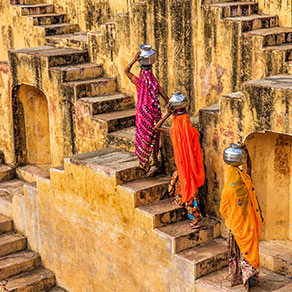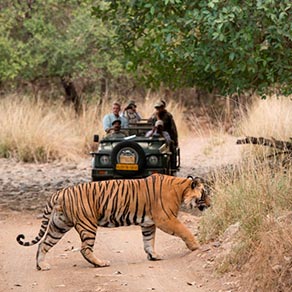The Spice Route: Discovering India’s Diverse Culinary Landscape
At home in the UK, when we think of Indian food, images of heavy, rich and red hot curries might spring to mind. While this is part of the vast tapestry of Indian cuisine, reducing it to ‘curry’ does no justice to its depth and diversity.
As anyone who visits India quickly learns, Indian food is far more varied, nuanced, and exciting than the stereotypes suggest.
In fact, ‘curry’ in India is a broad term, referring to a multitude of dishes featuring a complex mix of spices and flavours. Some of these are indeed rich and hearty, but others can be light and brothy.
As for the spice level, while Indian food is known for its bold, robust flavours, it is not universally ‘hot’ or ‘spicy’ in terms of heat. The art of Indian spice blending or ‘Masala’ is about creating a balanced, aromatic flavour profile, not just about adding heat. And, significantly, the cuisine encompasses a whole spectrum of dishes – from subtly flavoured desserts and cooling yoghurt-based accompaniments to mildly spiced lentil soups and stir-fried dishes.
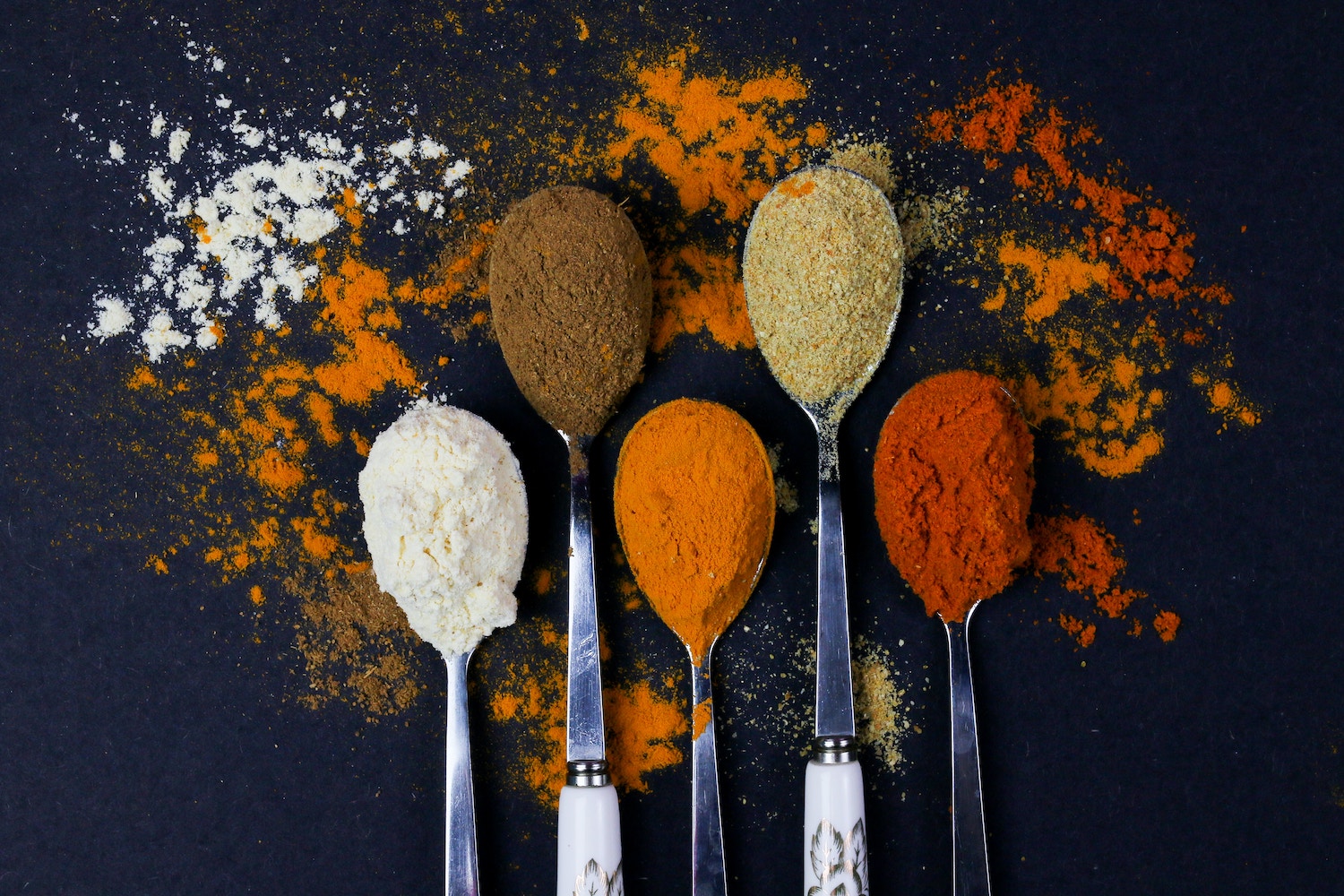
A long culinary history
The roots of Indian cuisine lie with the Indus Valley Civilization (around 3300–1300 BCE). It was here that crops like barley and wheat were first cultivated in the Indian subcontinent. Archaeological evidence suggests the use of mustard, dates, sesame, and even spices like turmeric, ginger, and garlic in the diets of these early settlers.
As history unfolded, several empires left indelible imprints on the culinary landscape of India. The Aryan, Maurya, and Gupta Empires, among others, introduced new foods, rituals, and cooking techniques. The Mauryan Emperor Ashoka, a staunch advocate of Buddhism, popularised vegetarianism, significantly impacting the food habits of India’s inhabitants.
As often happens in history, it was the arrival of foreign influences that significantly diversified Indian cuisine. The Mughals, arriving from Central Asia, brought with them rich, fragrant dishes like biryani and various forms of roti (bread). Similarly, the Portuguese introduced New World crops like potatoes, tomatoes, and chillies.
So what, specifically, makes Indian cuisine distinctive? A crucial characteristic is the elaborate use of spices, earning India the epithet “Land of Spices.” From the earthy cumin and pungent asafoetida to the fiery red chilli and fragrant cardamom, spices are the heart and soul of Indian dishes. They’re used whole, ground into powders, or tempered in hot oil to release their flavours, creating layers of complexity in each dish.
Another defining feature of Indian cuisine is its inherent diversity. It is one of the few culinary traditions where vegetarian and non-vegetarian foods coexist and are equally celebrated. The ancient science of Ayurveda profoundly influences this approach. Ayurveda promotes the concept of balance in the diet, suggesting that all six tastes – sweet, sour, salty, bitter, pungent, and astringent – should be included in each meal.
Staple foods vary regionally, reflecting the agricultural practices of each area. Northern India predominantly consumes wheat-based dishes, while rice is a staple in the southern and eastern parts.
Traditional Indian cooking methods further add to the cuisine’s diversity. From the smoky flavours imparted by the tandoor (clay oven) in the north to the steamed and fermented dishes common in the south, these techniques are as varied as the landscape itself.
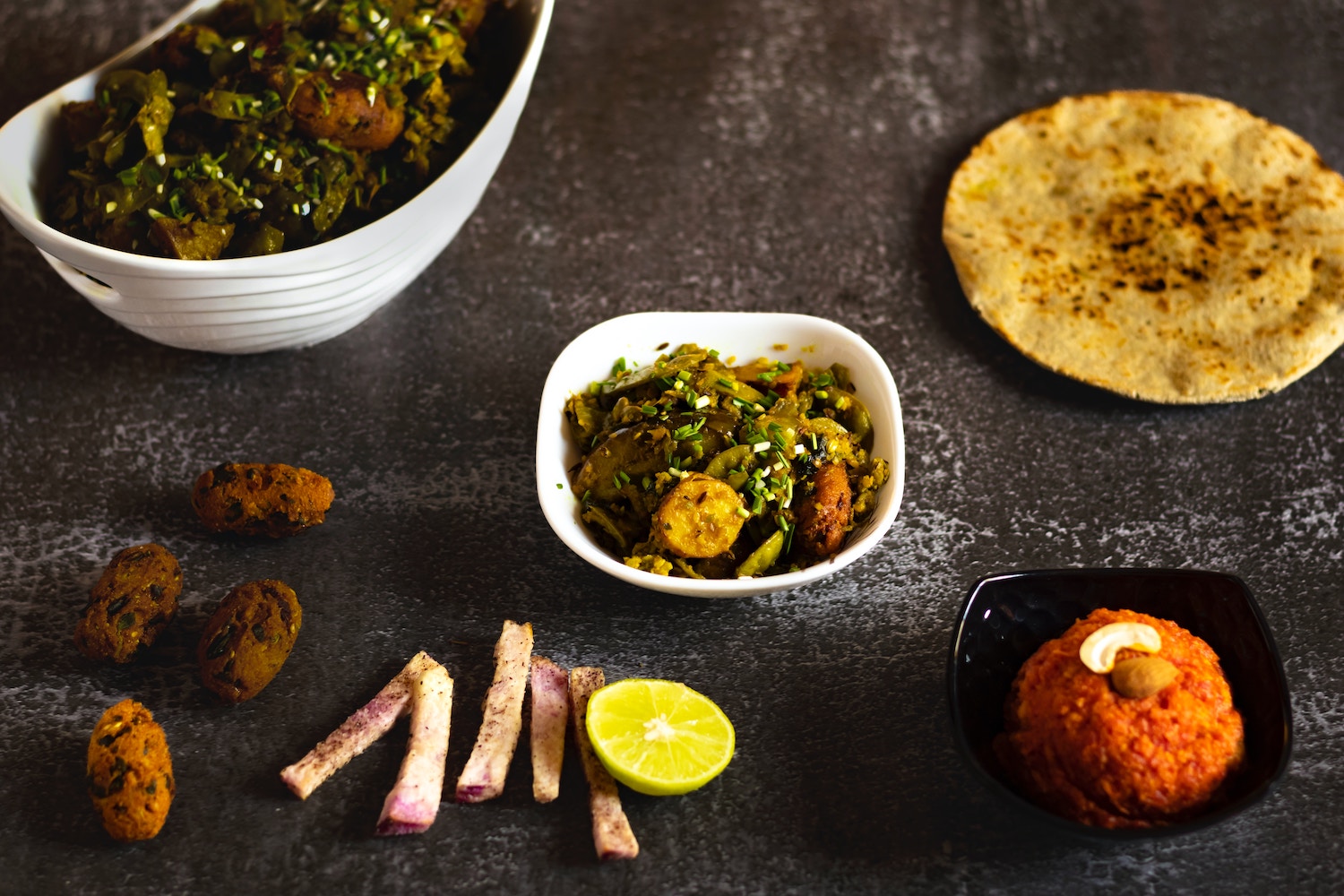
Regional distinctions
Indian cuisine is as diverse as the country’s cultural fabric, shaped by the unique geography, climate, history, and local customs of each region.
Northern India is influenced heavily by the Mughal and Persian culinary traditions, thanks to waves of historical conquests. Staples include wheat-based flatbreads (like roti and naan) and a profusion of rich, spicy curries. The region is also renowned for its tandoori cooking – a style that involves roasting marinated meats and vegetables in a tandoor, or clay oven. Signature dishes include Butter Chicken, a creamy tomato-based curry, and the royal biryani, a fragrant, spiced rice dish layered with meat, usually slow-cooked in a sealed pot.
In contrast, Southern India is a world of tangy tamarind, coconut and lentils. The cuisine here revolves around rice, with a hotter climate favouring rice cultivation over wheat. Dosas (crispy fermented rice and lentil crepes), Idlis (steamed rice cakes), and Sambar (a tangy lentil soup) are staple foods, served with a variety of chutneys. A specialty from Kerala, the ‘Sadya’ meal served on a banana leaf, features over two dozen vegetarian dishes and captures the region’s culinary ethos beautifully.
Eastern Indian cuisine, especially in Bengal and Odisha, is marked by its love for fish and sweets. Freshwater fish like Hilsa and Rohu feature in many traditional recipes, cooked in mustard sauce or steamed in banana leaves. The region’s sweets, such as the Rosogolla and Sandesh, made from sweetened, finely ground fresh cheese, are famous nationwide.
In Western India, the arid region of Rajasthan dishes out hearty food like Dal Baati Churma – baked dough balls served with lentil soup and sweet crumble. In contrast, the coastal areas, including Goa and Maharashtra, revel in seafood, coconut, and the spicy-sour flavours of Kokum fruit. Goan cuisine, with its Portuguese influences, offers dishes like Vindaloo, a spicy vinegar-infused curry.
Northeast Indian cuisine is distinctive, primarily using simple ingredients and methods. Smoked and fermented foods are common, like the smoked pork with bamboo shoot from Nagaland. Rice is a staple, often accompanied by fish, meat, and an array of locally grown herbs and vegetables. The food is less spicy but incorporates unique ingredients like Bhut Jolokia, one of the hottest chillies in the world.
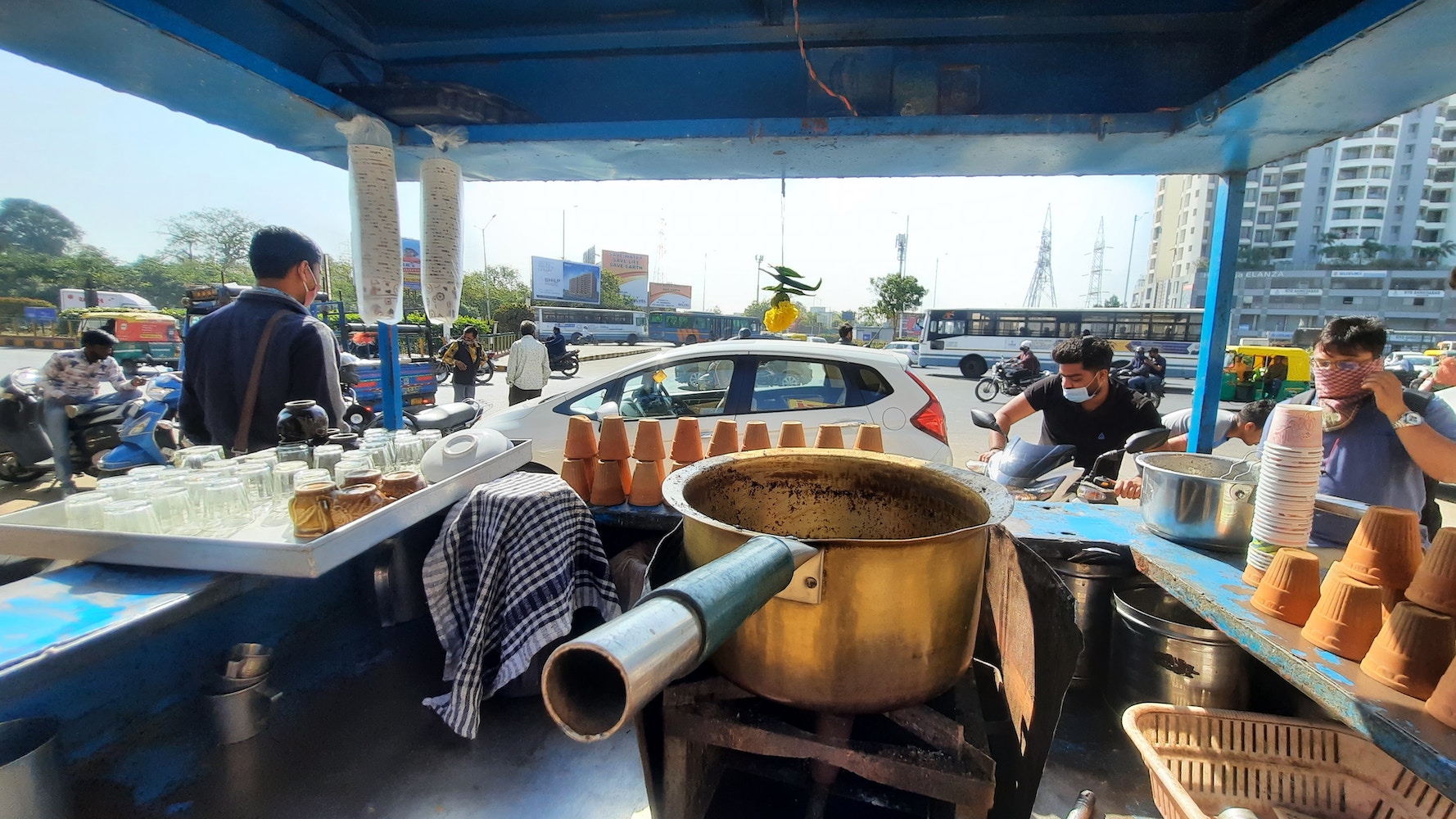
How to experience Indian cuisine
Street Food: Street food is a vital part of the Indian culinary experience. Samosas, chaats, pani puri, vada pav, and many others offer an explosion of flavours. However, ensure the stall is busy (a sign of high turnover and fresh produce) and maintains basic hygiene standards. Some visitors may need a bit of time to adjust to street food to avoid stomach upsets.
Go Vegetarian: India is a paradise for vegetarians, with perhaps the greatest variety of vegetarian dishes in the world. Even if you’re a meat-eater, don’t miss out on the extensive and delicious vegetarian options.
Traditional Dining Experiences: Consider traditional dining experiences like eating a South Indian meal off a banana leaf, enjoying a Rajasthani thali, or savouring a Mughlai feast in Old Delhi. These experiences are about more than just the food, immersing you in the local eating customs and traditions.
Hydration: India is generally hot, so staying hydrated is crucial. However, it’s recommended to drink only bottled water from a reliable brand. Avoid ice in your drinks unless you’re sure it’s made from filtered water.
Try Indian Sweets: Indian sweets or ‘mithai’ are worth trying. From the milky, cardamom-infused ‘kulfi’ to the syrup-soaked ‘gulab jamun’ or the delicate ‘jalebi,’ Indian desserts offer something for every palate.
Cooking Classes: Consider taking a cooking class if you have time. This can provide a deeper understanding of Indian spices and cooking techniques, and you’ll have a great skill to take home!
Chai Time: Don’t miss out on the chai experience. Indian tea, often a mix of black tea, milk, sugar, and spices like cardamom and ginger, is a staple and worth trying from a street-side ‘chai wallah.’
Respect Local Customs: Some places in India have specific dietary customs. For example, in many traditional South Indian homes, meals are taken sitting on the floor and eaten with the right hand. Try to embrace and respect these customs when you encounter them.
YONDER SUGGESTIONS
Yonder is a specialist India tour operator, including tailor-made, luxury holidays to India which can include any of the must see places discussed in this article.
Previous holidays which we’ve booked include India’s Golden Triangle and Tigers tour, a culture, wildlife and backwaters tour in Kerala and the hidden India Rajasthan tour. These can be great inspiration for your own itineraries.
We can also arrange luxury holidays which explore all the different aspects of India such as our Incredible India tour.
All Yonder itineraries are crafted on a tailor-made, one-off basis, so you can be sure that your holiday will be as individual as you are.
At home in the UK, when we think of Indian food, images of heavy, rich and red hot curries might spring to mind. While this is part of the vast tapestry of Indian cuisine, reducing it to ‘curry’ does no justice to its depth and diversity.
As anyone who visits India quickly learns, Indian food is far more varied, nuanced, and exciting than the stereotypes suggest.
In fact, ‘curry’ in India is a broad term, referring to a multitude of dishes featuring a complex mix of spices and flavours. Some of these are indeed rich and hearty, but others can be light and brothy.
As for the spice level, while Indian food is known for its bold, robust flavours, it is not universally ‘hot’ or ‘spicy’ in terms of heat. The art of Indian spice blending or ‘Masala’ is about creating a balanced, aromatic flavour profile, not just about adding heat. And, significantly, the cuisine encompasses a whole spectrum of dishes – from subtly flavoured desserts and cooling yoghurt-based accompaniments to mildly spiced lentil soups and stir-fried dishes.

A long culinary history
The roots of Indian cuisine lie with the Indus Valley Civilization (around 3300–1300 BCE). It was here that crops like barley and wheat were first cultivated in the Indian subcontinent. Archaeological evidence suggests the use of mustard, dates, sesame, and even spices like turmeric, ginger, and garlic in the diets of these early settlers.
As history unfolded, several empires left indelible imprints on the culinary landscape of India. The Aryan, Maurya, and Gupta Empires, among others, introduced new foods, rituals, and cooking techniques. The Mauryan Emperor Ashoka, a staunch advocate of Buddhism, popularised vegetarianism, significantly impacting the food habits of India’s inhabitants.
As often happens in history, it was the arrival of foreign influences that significantly diversified Indian cuisine. The Mughals, arriving from Central Asia, brought with them rich, fragrant dishes like biryani and various forms of roti (bread). Similarly, the Portuguese introduced New World crops like potatoes, tomatoes, and chillies.
So what, specifically, makes Indian cuisine distinctive? A crucial characteristic is the elaborate use of spices, earning India the epithet “Land of Spices.” From the earthy cumin and pungent asafoetida to the fiery red chilli and fragrant cardamom, spices are the heart and soul of Indian dishes. They’re used whole, ground into powders, or tempered in hot oil to release their flavours, creating layers of complexity in each dish.
Another defining feature of Indian cuisine is its inherent diversity. It is one of the few culinary traditions where vegetarian and non-vegetarian foods coexist and are equally celebrated. The ancient science of Ayurveda profoundly influences this approach. Ayurveda promotes the concept of balance in the diet, suggesting that all six tastes – sweet, sour, salty, bitter, pungent, and astringent – should be included in each meal.
Staple foods vary regionally, reflecting the agricultural practices of each area. Northern India predominantly consumes wheat-based dishes, while rice is a staple in the southern and eastern parts.
Traditional Indian cooking methods further add to the cuisine’s diversity. From the smoky flavours imparted by the tandoor (clay oven) in the north to the steamed and fermented dishes common in the south, these techniques are as varied as the landscape itself.

Regional distinctions
Indian cuisine is as diverse as the country’s cultural fabric, shaped by the unique geography, climate, history, and local customs of each region.
Northern India is influenced heavily by the Mughal and Persian culinary traditions, thanks to waves of historical conquests. Staples include wheat-based flatbreads (like roti and naan) and a profusion of rich, spicy curries. The region is also renowned for its tandoori cooking – a style that involves roasting marinated meats and vegetables in a tandoor, or clay oven. Signature dishes include Butter Chicken, a creamy tomato-based curry, and the royal biryani, a fragrant, spiced rice dish layered with meat, usually slow-cooked in a sealed pot.
In contrast, Southern India is a world of tangy tamarind, coconut and lentils. The cuisine here revolves around rice, with a hotter climate favouring rice cultivation over wheat. Dosas (crispy fermented rice and lentil crepes), Idlis (steamed rice cakes), and Sambar (a tangy lentil soup) are staple foods, served with a variety of chutneys. A specialty from Kerala, the ‘Sadya’ meal served on a banana leaf, features over two dozen vegetarian dishes and captures the region’s culinary ethos beautifully.
Eastern Indian cuisine, especially in Bengal and Odisha, is marked by its love for fish and sweets. Freshwater fish like Hilsa and Rohu feature in many traditional recipes, cooked in mustard sauce or steamed in banana leaves. The region’s sweets, such as the Rosogolla and Sandesh, made from sweetened, finely ground fresh cheese, are famous nationwide.
In Western India, the arid region of Rajasthan dishes out hearty food like Dal Baati Churma – baked dough balls served with lentil soup and sweet crumble. In contrast, the coastal areas, including Goa and Maharashtra, revel in seafood, coconut, and the spicy-sour flavours of Kokum fruit. Goan cuisine, with its Portuguese influences, offers dishes like Vindaloo, a spicy vinegar-infused curry.
Northeast Indian cuisine is distinctive, primarily using simple ingredients and methods. Smoked and fermented foods are common, like the smoked pork with bamboo shoot from Nagaland. Rice is a staple, often accompanied by fish, meat, and an array of locally grown herbs and vegetables. The food is less spicy but incorporates unique ingredients like Bhut Jolokia, one of the hottest chillies in the world.

How to experience Indian cuisine
Street Food: Street food is a vital part of the Indian culinary experience. Samosas, chaats, pani puri, vada pav, and many others offer an explosion of flavours. However, ensure the stall is busy (a sign of high turnover and fresh produce) and maintains basic hygiene standards. Some visitors may need a bit of time to adjust to street food to avoid stomach upsets.
Go Vegetarian: India is a paradise for vegetarians, with perhaps the greatest variety of vegetarian dishes in the world. Even if you’re a meat-eater, don’t miss out on the extensive and delicious vegetarian options.
Traditional Dining Experiences: Consider traditional dining experiences like eating a South Indian meal off a banana leaf, enjoying a Rajasthani thali, or savouring a Mughlai feast in Old Delhi. These experiences are about more than just the food, immersing you in the local eating customs and traditions.
Hydration: India is generally hot, so staying hydrated is crucial. However, it’s recommended to drink only bottled water from a reliable brand. Avoid ice in your drinks unless you’re sure it’s made from filtered water.
Try Indian Sweets: Indian sweets or ‘mithai’ are worth trying. From the milky, cardamom-infused ‘kulfi’ to the syrup-soaked ‘gulab jamun’ or the delicate ‘jalebi,’ Indian desserts offer something for every palate.
Cooking Classes: Consider taking a cooking class if you have time. This can provide a deeper understanding of Indian spices and cooking techniques, and you’ll have a great skill to take home!
Chai Time: Don’t miss out on the chai experience. Indian tea, often a mix of black tea, milk, sugar, and spices like cardamom and ginger, is a staple and worth trying from a street-side ‘chai wallah.’
Respect Local Customs: Some places in India have specific dietary customs. For example, in many traditional South Indian homes, meals are taken sitting on the floor and eaten with the right hand. Try to embrace and respect these customs when you encounter them.
YONDER SUGGESTIONS
Yonder is a specialist India tour operator, including tailor-made, luxury holidays to India which can include any of the must see places discussed in this article.
Previous holidays which we’ve booked include India’s Golden Triangle and Tigers tour, a culture, wildlife and backwaters tour in Kerala and the hidden India Rajasthan tour. These can be great inspiration for your own itineraries.
We can also arrange luxury holidays which explore all the different aspects of India such as our Incredible India tour.
All Yonder itineraries are crafted on a tailor-made, one-off basis, so you can be sure that your holiday will be as individual as you are.

 USD
USD
